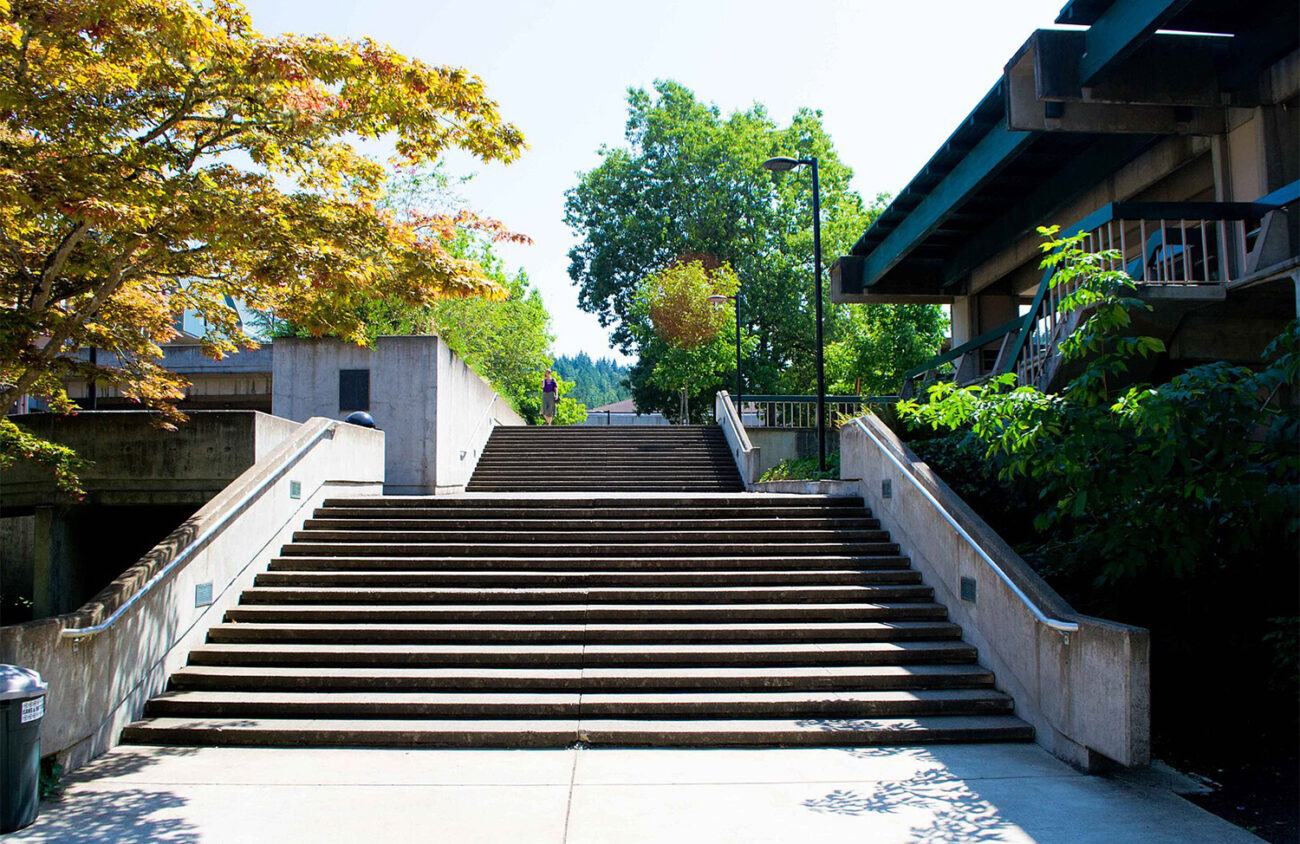Starting and ending college at a four-year university is the right choice for some college students, but not for all, and that’s OK. Student higher education pathways can be different and bring students to the same places.
Lane Community College has programs designed to get its students to where they want to be, whether it’s to earn an associate’s degree or take classes that will help them transfer to a four-year university.
Of the students starting at LCC in fall 2024, about 17 percent will transfer to the University of Oregon, says Brett Rowlett, LCC’s executive director of external affairs. Five to six percent will transfer to Oregon State University.
“For students that want a little bit more attention, want access to a faculty member, community college is a great first step,” Rowlett says.
Class sizes are smaller at LCC than at UO. General education classes that might have 200 students at UO have closer to 20 students at LCC, Rowlett says.
“Some students stay four terms, some students stay for three years,” says Dawn Whiting, associate vice president of enrollment management and services at LCC. “It just really depends on when they meet the admissions requirements in the university and when it’s the right time for them.”
The LCC advising team and the UO advising team communicate regularly, which is a benefit for students transferring from LCC to UO, says Jesse Nelson, UO’s assistant vice provost for advising and accessibility.
Whiting suggests that students declare the path they want to take, then meet with an academic advisor at LCC as soon as possible to plan the classes they need to complete before they transfer.
She says she also highly recommends that students talk to an academic advisor at the university they’re interested in to double check that the classes they’re taking at LCC are aligned with their degree path once they transfer.
“The thing with transfer students that we want to be mindful of is we don’t want them to miss a beat when they come here,” Nelson says of the UO. “We want them to feel like it’s as smooth of a transition as possible. So having that early conversation with an advisor is really helpful.”
In fall 2023 transfer students made up 15.5 percent of UO’s undergraduate enrollment, Nelson says. The fall 2024 projection for undergraduate transfer enrollment is 12 percent. The majority of those community college students come from LCC, Portland Community College, Chemeketa Community College in Salem, and Southwestern Oregon Community College in Coos Bay, Nelson says.
Transfer students don’t have to be admitted at UO to meet with an advisor, he says.
“Whenever prospective students reach out to us, we want to help them and give them as much information as we can,” Nelson says.
Students who plan on transferring to a four-year university in Oregon after earning a full associate’s degree, which typically takes two years, are encouraged to declare an associates of arts Oregon transfer degree, Whiting says. These students are able to transfer to a university with junior class standing.
“Some students may do it quicker than two years just because they come in with a lot of credits earned in high school through our College Now program,” Rowlett says.
College Now gives high school juniors and seniors in the Eugene area opportunities to earn college credit, Rowlett says.
For students looking to transfer from LCC sooner than they would if they were earning an associate’s degree, Whiting says she encourages students to use the Core Transfer Maps.
Students at community colleges in Oregon who don’t know what field of study they want to pursue can use the Core Transfer Maps to ensure their general education credits will meet requirements at all Oregon public universities and participating private colleges and universities.
About one-half of LCC students are enrolled in what are typically considered transfer courses, but closer to one-third of students transfer to a four-year university within four years of starting at LCC, Rowlett says.
LCC’s transfer center opened in October 2023 and is a great resource for students who are looking into transferring, Whiting says. Representatives from UO and OSU are available to talk to students on a regular basis.
UO’s Transfer Student Club “can be helpful to feel like, ‘OK, I’ve got some people here, and I’ve got some folks that understand what my experience, to some degree, has been like,’” Nelson says. “That community transition matters, too.”
Find LCC’s Transfer Center at Lanecc.edu/get-support/transfer-center. Find the UO Transfer Student Club at Linktr.ee/uotransfers.
